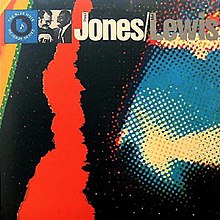 |
| Four sides, five bucks. |
You listen to less stuff. The laziness induced by the set-and-forget computer mode of listening actually works to your benefit: the path of least resistance is to play the side again, and again, which is what you're supposed to do anyway.
You listen to more stuff. Putting something on, skipping tracks, and changing records is more cumbersome, so you tend to let the thing run, so you hear all the things you'd skip over on the mp3 player if they don't grab you in the first five seconds. Ballads, for one. The format helps you listen to more than just the show-stoppers. Musicians with professional ambitions do not get the same luxury of diving straight for the money shot in their listening, like regular fans do.
You give yourself a chance to learn a little something about the recording. You have the personnel, composer, engineer, producer, and more right under your eyes if you just flip the sleeve over, so it's easy to take in a lot of small bits of information by accident. You can often get the same info on the computer, but you have to look for it- it could take you a dozen mouse clicks, a little bit of typing in Google, and some scrolling around to get it.
An album side is the perfect container. About the length of a Simpsons episode, minus commercials, and poetically brief if you've gotten used to the too-long CD format, or the permanent shuffle mode of the iPod, or the global content-tsunami aimed permanently at your face that is Pandora, Spotify and the rest. The LP side is the suite of the later 20th century.
It's cheap. Today on the way home from a lesson I picked up a '70's trio record with Joe Sample, Ray Brown and Shelly Manne, and a Flora Purim record with Airto and Joe Henderson for a grand total of $5.80, and passed over a bunch of worthy <$3 things simply because I didn't feel like sorting through the stacks again looking for them, and I knew I'd be back. For my $2.80 I got a great lesson on playing the ride cymbal from Shelly since I've been sitting here writing this paragraph.





























